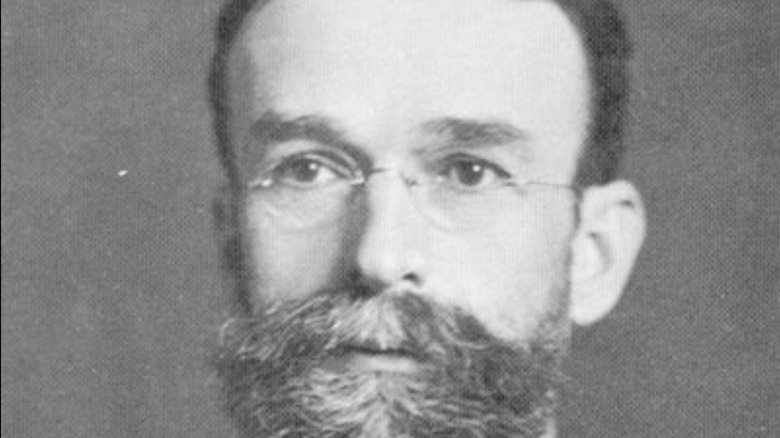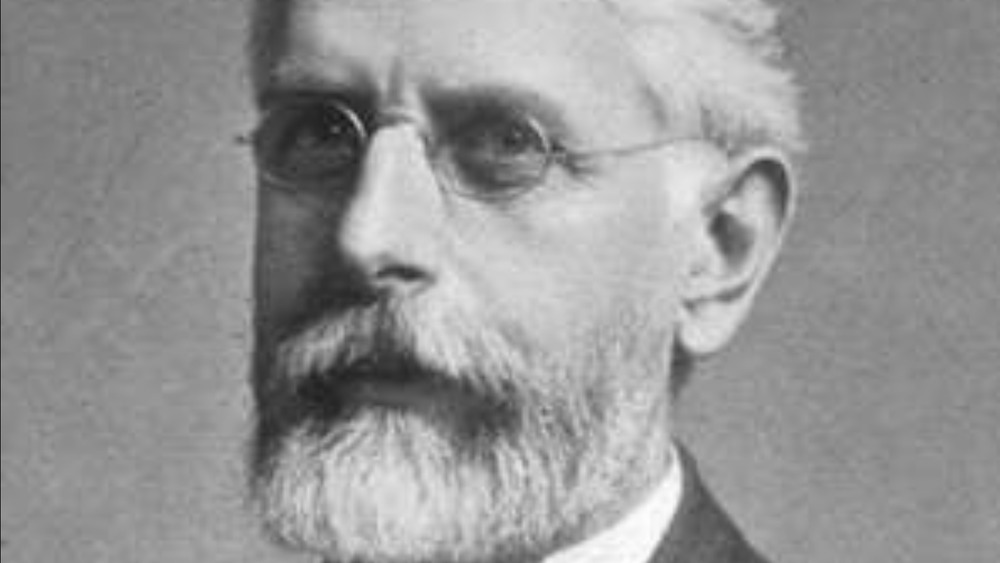This Is Who Salmonella Is Named After
According to WebMD, salmonella is "the most frequently reported cause of food-related illness in the United States." Illness resulting from consuming salmonella is called salmonellosis, and although its symptoms are enormously unpleasant — upset stomach, diarrhea, fever, and cramping — they usually clear up on their own after a few days. Very rarely, salmonella poisoning requires hospitalization, and even more rarely, it can be fatal. It's generally spread via contaminated foods, including meat, raw vegetables, unpasteurized dairy products, raw or undercooked eggs, or some processed foods. How long have people known about salmonella? Who is responsible for its discovery?
The bacteria Salmonella enterica was accidentally discovered by a pathologist, Dr. Theobald Smith (pictured above), in 1884, as discussed in the journal Emerging Infectious Diseases in 2008. Smith is best known for his work on Texas cattle fever; he and some colleagues discovered the disease was caused by a protozoan parasite transmitted to cattle via ticks. This was the first time anyone linked insects with the transmission of infectious diseases. A few years before this important discovery, Dr. Smith became one of the first scientists to work at the Bureau of Animal Industry (BAI) within the United States Department of Agriculture when it opened in 1884, where he worked under Dr. Daniel E. Salmon.
Who really discovered salmonella?
As reported by the National Agricultural Library (NAL) of the United States Department of Agriculture, Dr. Salmon (pictured above) was a member of the first class admitted to Cornell University and went on to earn the first Doctorate of Veterinary Medicine awarded in the United States. In 1879, he was appointed to a Cornell project that "sought to control contagious bovine pleuropneumonia, an infectious disease of the lungs in cattle." This led to his studying Texas cattle fever for the Department of Agriculture, where he established the Veterinary Division in 1883. In 1884, he was appointed chief of the Bureau of Animal Industry, where he supervised Dr. Theobald Smith.
According to the American Veterinary Medical Foundation, when Dr. Smith discovered the bacteria later named Salmonella, he was under the impression that it caused hog cholera, which was later proven to be a viral infection. The NAL writes that Salmonella "was named for Dr. Salmon" by Dr. Smith, while Emerging Infectious Diseases notes "although this genus of bacteria was discovered by Smith, Daniel E. Salmon, Smith's chief, claimed credit for the discovery, and the genus Salmonella is named after him."
Regardless of whether the bacteria was named in honor of Dr. Salmon or claimed by Dr. Salmon, the two scientists continued working together and making new discoveries regarding animals and infectious diseases at the BAI. In 1895, Dr. Smith left for Cambridge, Massachusetts to teach at Harvard University and direct the Massachusetts State Antitoxin and Vaccine Laboratory.

